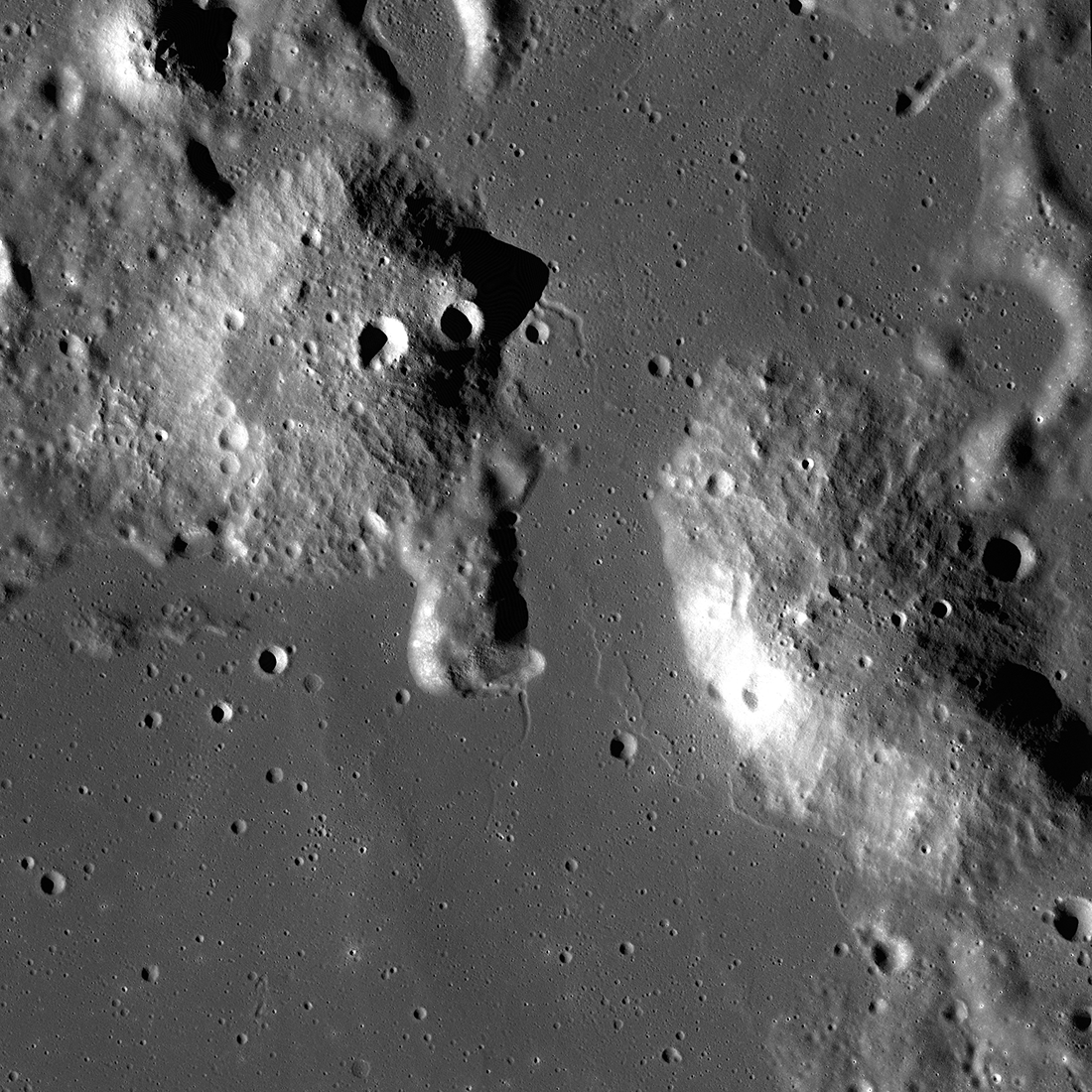A Lunar Mystery: The Gruithuisen Domes

| Credit | NASA/GSFC/Arizona State University |
|---|---|
| Historical Date | April 20, 2022 |
| Language |
|
We've got a lunar mystery on our hands! The Gruithuisen Domes are a geologic enigma. Based on early telescopic and spacecraft observations, these domes have long been suspected to be formed by a magma rich in silica, similar in composition to granite. Observations from the Lunar Reconnaissance Orbiter (LRO) confirmed that the Gruithuisen Domes are distinct from the surrounding terrain, which is covered by ancient hardened basaltic lava flows. Basaltic lavas are runny and thin and flow sort of like motor oil – as opposed to silicic lavas, which are thick, and flow more like peanut butter. The Gruithuisen Domes were formed by eruptions of silicic lavas, which didn't flow outward easily, creating domes.
The real mystery is how such silicic magmas could form on the Moon. On Earth, silicic volcanoes typically form in the presence of two ingredients—water and plate tectonics. But without these key ingredients on the Moon, scientists are left to wonder: How did the Gruithuisen Domes form?
There are few theories about the formation of silica-rich lunar magmas. In order to truly understand these puzzling features, we need to visit the domes, explore them from the ground, and analyze rock samples. NASA is planning to do just that. In 2025, a suite of scientific instruments will be delivered to this region, hosted on a Commercial Lunar Payload Services lander and rover. LRO Camera images, like those featured here, will be critical for selecting a landing site.
Author: Caroline Capone
Science Advisors: Sarah Valencia and Andrea Jones
